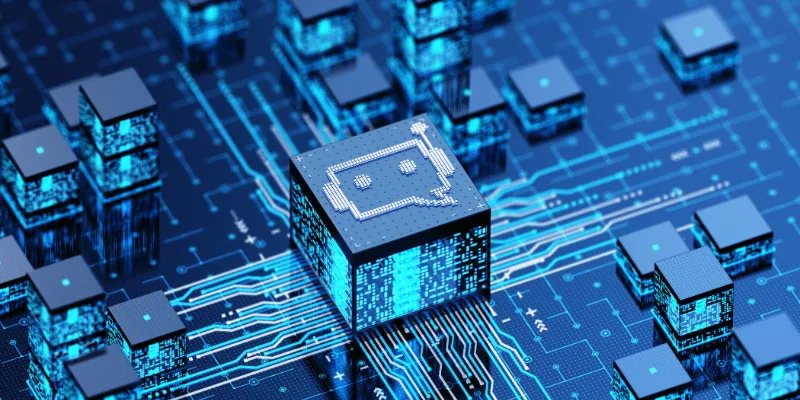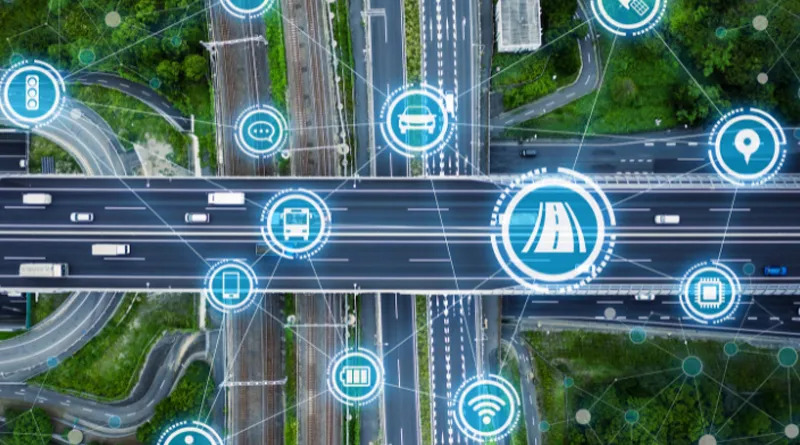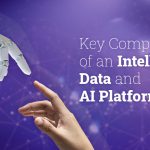In the dynamic landscape of Information Technology (IT), the integration of cutting-edge technologies is essential for maintaining optimal performance and efficiency. One such groundbreaking advancement is Generative Artificial Intelligence (Generative AI), which goes beyond traditional automation by enabling systems to learn, adapt, and optimize IT infrastructure.
Overview of Generative AI
Generative AI, short for Generative Artificial Intelligence, refers to a class of artificial intelligence techniques that involve the creation of new and original content, often in the form of images, text, or other data types. Unlike traditional AI systems that are designed for specific tasks, generative AI has the ability to generate content autonomously, mimicking human creativity and problem-solving skills.
The Retail Revolution: How Early Adopters of Generative AI Are Winning with Personalization
What’s behind the sudden hype about generative AI?
The surge in enthusiasm surrounding generative AI is fueled by several converging factors that collectively showcase its remarkable capabilities and potential impact. Breakthroughs in research, notably exemplified by advanced models like GPT-3 and powerful generative adversarial networks (GANs), have significantly elevated the field’s prominence. These models, with their ability to produce high-quality, contextually relevant content, have captured widespread attention.
Beyond theoretical prowess, generative AI has showcased practical utility across diverse industries, including healthcare, finance, and entertainment. Its ability to generate synthetic data, optimize processes, and stimulate creativity has drawn the attention of businesses seeking innovative solutions.
In essence, the sudden hype surrounding generative AI is a result of the convergence of technological breakthroughs, creative applications, practical industry implementations, ethical considerations, and heightened awareness. As generative AI continues to evolve, its influence is expected to extend further, impacting various facets of technology, creativity, and societal dynamics.
Generative AI for Business expansion | Key Components of an Intelligent Data and AI Platform
Significance of Generative AI in IT Infrastructure Optimization
In the ever-evolving realm of Information Technology (IT), the significance of Generative Artificial Intelligence (Generative AI) in optimizing IT infrastructure cannot be overstated. This transformative technology offers a range of capabilities that go beyond conventional approaches, reshaping the way organizations manage and enhance their technological backbone.
Here are key points highlighting the significance of Generative AI in IT infrastructure optimization:
-
Adaptive Resource Allocation:
Generative AI enables adaptive resource allocation, allowing IT systems to dynamically scale resources based on real-time demand. This adaptability ensures optimal performance and efficiency, eliminating the inefficiencies associated with static resource provisioning.
-
Proactive Issue Prevention:
One of the standout features of Generative AI is its ability to facilitate predictive maintenance. By analyzing patterns and trends, it empowers organizations to proactively address potential issues before they escalate. This proactive approach minimizes system downtime, enhances reliability, and reduces the costs associated with reactive maintenance.
-
Enhanced Network Performance:
Generative AI applications in network optimization contribute to enhanced performance through intelligent routing, efficient traffic management, and dynamic bandwidth allocation. This results in a responsive and robust network infrastructure capable of meeting the demands of modern digital operations.
-
Security and Anomaly Detection:
The significance of Generative AI in IT security lies in its capacity to detect anomalies and identify potential security threats. Through continuous monitoring and analysis, Generative AI enhances the ability to respond rapidly to emerging security risks, fortifying IT infrastructure against cyber threats in real-time.
The Power of Cloud-Based Time Attendance Systems for Modern Enterprises

Applications of Generative AI in IT Infrastructure Optimization
-
Automated Resource Allocation:
Generative AI, through continuous learning and adaptation, enables systems to understand and respond to changing conditions. By analyzing historical data and current usage patterns, Generative AI algorithms can predict upcoming demands. When integrated into automated resource allocation systems, this technology ensures that computing resources such as CPU, memory, and storage are allocated and scaled in real-time, preventing underutilization or overprovisioning. This dynamic allocation enhances overall efficiency and responsiveness of IT infrastructure.
-
Predictive Maintenance:
Generative AI employs predictive analytics to understand normal system behavior and detect deviations that may indicate impending issues. By learning from historical data, Generative AI models can forecast when hardware components or software systems are likely to experience problems. This enables IT professionals to proactively address issues, schedule maintenance activities, and replace or repair components before they cause disruptions. The result is minimized downtime, increased system reliability, and cost-effective maintenance practices.
-
Workflow Automation:
Generative AI is integrated into workflow automation systems to understand, learn, and replicate human-like decision-making processes. By analyzing historical data and observing user interactions, Generative AI models can identify patterns and automate routine IT tasks. This may include software deployment, system monitoring, and incident response. Workflow automation powered by Generative AI not only accelerates processes but also reduces the risk of human errors, leading to improved operational efficiency and resource utilization within the IT infrastructure.
-
Data Center Management:
Generative AI optimizes data center operations by intelligently distributing workloads across servers. This ensures efficient use of computing resources and contributes to cost savings. By dynamically adjusting resource allocation, Generative AI promotes energy-efficient data center management. It aligns computing power with demand, reducing unnecessary power consumption and environmental impact.
-
Intelligent Chatbots for Support:
Generative AI is applied in chatbots to understand and respond to user queries. It automates troubleshooting processes, providing quick resolutions to common IT issues and improving user satisfaction. Generative AI-powered chatbots continuously learn from user interactions, allowing them to evolve and provide increasingly accurate and personalized support over time.
Discover the Power of Drupal 10 | Navigating the Drupal 9 End-of-Life | Unleashing the Power of Accessibility Testing

Future Trends and Developments
As technology continues to evolve, the future of Generative AI in IT infrastructure optimization holds exciting possibilities. Anticipated trends and developments point toward a more intelligent, adaptive, and efficient IT landscape.
-
Explainable AI for Transparent Decision-Making:
Future Generative AI models will prioritize explainability, ensuring that their decision-making processes are transparent and understandable. This trend addresses concerns about the “black box” nature of some AI systems, making them more accessible for scrutiny and trust.
-
Quantum Computing Integration:
As quantum computing advances, Generative AI is expected to integrate with quantum computing systems. This union has the potential to exponentially increase computational capabilities, enabling more complex simulations, optimizations, and analyses for IT infrastructure.
-
Cybersecurity Applications:
Generative AI will play a crucial role in advanced cybersecurity applications. Future developments may include AI-driven threat detection, automated response mechanisms, and the generation of adaptive security measures to counter evolving cyber threats.
-
Federated Learning for Decentralized Optimization:
Federated learning, where models are trained across decentralized devices and systems, will gain prominence. This approach allows Generative AI to optimize IT infrastructure across distributed networks while respecting data privacy and security.
-
Quantum-Safe Cryptography:
In anticipation of quantum computing advancements, Generative AI will contribute to the development and implementation of quantum-safe cryptographic methods. This ensures the continued security of data and communications in the era of quantum computing.
The Future of Retail: Leveraging the Metaverse for Business Success | 5 Trends Shaping Grocery Retail And Beyond
Wrapping up
Generative AI, through its ability to analyze data, make predictions, and generate new content, plays a crucial role in optimizing IT infrastructure across various industries. By automating tasks, improving resource utilization, and enhancing decision-making processes, generative AI contributes to more resilient, adaptive, and efficient IT systems.
By exploring its various facets, organizations can gain a deeper understanding of how this technology can revolutionize their approach to managing and enhancing their IT backbone. As the landscape continues to evolve, embracing Generative AI becomes not just a choice but a strategic imperative for staying ahead in the digital era. Reach out to us today for a free consultation!!











